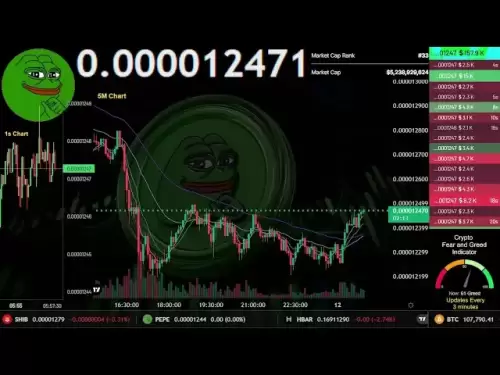-
 Bitcoin
Bitcoin $107,631.9817
-1.73% -
 Ethereum
Ethereum $2,739.1787
-4.61% -
 Tether USDt
Tether USDt $1.0000
-0.01% -
 XRP
XRP $2.2427
-3.30% -
 BNB
BNB $664.0527
-0.73% -
 Solana
Solana $158.0902
-5.38% -
 USDC
USDC $0.9998
-0.01% -
 Dogecoin
Dogecoin $0.1876
-7.78% -
 TRON
TRON $0.2753
-3.21% -
 Cardano
Cardano $0.6820
-5.55% -
 Hyperliquid
Hyperliquid $43.0171
-0.38% -
 Sui
Sui $3.3308
-4.87% -
 Chainlink
Chainlink $14.3431
-7.89% -
 Avalanche
Avalanche $21.0266
-6.48% -
 Bitcoin Cash
Bitcoin Cash $437.7657
-1.56% -
 Stellar
Stellar $0.2746
-2.52% -
 UNUS SED LEO
UNUS SED LEO $8.8665
-1.96% -
 Toncoin
Toncoin $3.1885
-3.37% -
 Shiba Inu
Shiba Inu $0.0...01260
-6.84% -
 Hedera
Hedera $0.1686
-4.93% -
 Litecoin
Litecoin $88.8406
-5.16% -
 Polkadot
Polkadot $4.0542
-6.28% -
 Monero
Monero $322.5806
-4.20% -
 Ethena USDe
Ethena USDe $1.0004
-0.02% -
 Bitget Token
Bitget Token $4.7089
-3.10% -
 Dai
Dai $0.9998
-0.01% -
 Pepe
Pepe $0.0...01206
-9.06% -
 Uniswap
Uniswap $7.8694
-5.20% -
 Pi
Pi $0.6232
-2.68% -
 Aave
Aave $301.3815
-3.83%
What signal does the shortening of the MACD histogram represent?
The shortening of the MACD histogram signals weakening momentum, prompting traders to adjust strategies and consider potential trend reversals in cryptocurrency markets.
Jun 10, 2025 at 01:50 am
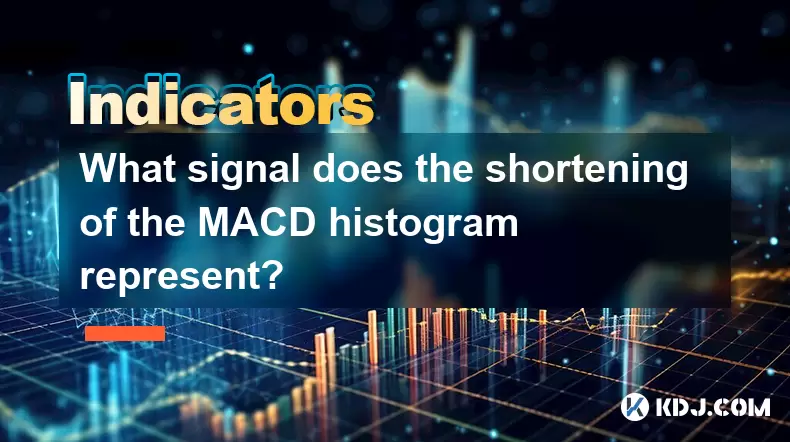
The Moving Average Convergence Divergence (MACD) histogram is a popular technical indicator used by cryptocurrency traders to gauge momentum and potential trend changes. Understanding the signal that the shortening of the MACD histogram represents is crucial for making informed trading decisions. This article will delve into the specifics of the MACD histogram, what it means when it shortens, and how traders can interpret and act on this signal within the context of cryptocurrency trading.
What is the MACD Histogram?
The MACD histogram is derived from the MACD line, which is calculated by subtracting the 26-day exponential moving average (EMA) from the 12-day EMA. The signal line, often a 9-day EMA of the MACD line, is then plotted on the chart. The histogram represents the difference between the MACD line and the signal line. When the MACD line is above the signal line, the histogram is positive, and when it's below, the histogram is negative.
The Significance of the MACD Histogram Shortening
When the MACD histogram begins to shorten, it indicates that the momentum of the current trend is weakening. A shortening histogram suggests that the distance between the MACD line and the signal line is decreasing. This can occur in both bullish and bearish trends, and its interpretation depends on the overall market context.
Interpreting a Shortening MACD Histogram in a Bullish Trend
In a bullish trend, a shortening MACD histogram indicates that the upward momentum is losing strength. This could signal that the current uptrend may be nearing its end, and traders should be cautious. If the histogram continues to shorten and eventually crosses below the zero line, it could confirm a bearish reversal. Traders might consider taking profits or adjusting their positions to mitigate potential losses.
Interpreting a Shortening MACD Histogram in a Bearish Trend
Conversely, in a bearish trend, a shortening MACD histogram suggests that the downward momentum is weakening. This could indicate that the current downtrend may be losing steam, and a potential bullish reversal could be on the horizon. If the histogram shortens and then crosses above the zero line, it might confirm a bullish reversal. Traders could look for opportunities to enter long positions or adjust their short positions accordingly.
Using the MACD Histogram Shortening in Trading Strategies
Traders often use the shortening of the MACD histogram as part of a broader trading strategy. Here are some practical ways to incorporate this signal into your trading approach:
Watch for Divergence: If the price of a cryptocurrency continues to rise while the MACD histogram shortens, it may indicate a bearish divergence. Conversely, if the price falls while the histogram shortens, it could signal a bullish divergence. These divergences can be early indicators of potential trend reversals.
Confirm with Other Indicators: It's essential to use the MACD histogram in conjunction with other technical indicators, such as the Relative Strength Index (RSI) or moving averages, to confirm the signal. A comprehensive analysis can help reduce false signals and improve trading accuracy.
Set Stop-Loss and Take-Profit Levels: When the MACD histogram shortens, traders can adjust their stop-loss and take-profit levels to manage risk effectively. For instance, in a bullish trend, tightening stop-loss levels can help protect profits if the trend reverses.
Monitor Volume: Volume can provide additional context to the MACD histogram signal. If the histogram shortens while volume decreases, it may reinforce the weakening trend. Conversely, if volume increases, it could indicate that the trend might continue despite the histogram's shortening.
Practical Example of Trading with a Shortening MACD Histogram
To illustrate how traders might use the shortening of the MACD histogram, consider the following example involving Bitcoin (BTC):
- Identify the Trend: Suppose BTC is in a bullish trend, with the price consistently making higher highs and higher lows.
- Monitor the MACD Histogram: As the price continues to rise, the MACD histogram begins to shorten, indicating weakening upward momentum.
- Look for Confirmation: Check other indicators, such as the RSI, to see if it's also showing signs of overbought conditions. Additionally, observe the volume to see if it's decreasing.
- Adjust Trading Strategy: If the histogram continues to shorten and eventually crosses below the zero line, consider taking profits or tightening stop-loss levels to protect against a potential bearish reversal.
Limitations and Considerations
While the shortening of the MACD histogram can be a valuable signal, it's important to be aware of its limitations. The MACD histogram is a lagging indicator, meaning it reacts to price changes rather than predicting them. Additionally, false signals can occur, especially in choppy or sideways markets. Therefore, it's crucial to use the MACD histogram as part of a comprehensive trading strategy and not rely on it solely.
Frequently Asked Questions
Q: Can the MACD histogram be used for all cryptocurrencies?
A: Yes, the MACD histogram can be applied to any cryptocurrency. However, the effectiveness of the indicator may vary depending on the liquidity and volatility of the specific cryptocurrency. For highly volatile assets, the MACD histogram might produce more frequent signals, requiring careful interpretation.
Q: How often should I check the MACD histogram?
A: The frequency of checking the MACD histogram depends on your trading style. For day traders, checking the histogram multiple times throughout the day can be beneficial. Swing traders might check it less frequently, perhaps once or twice a day, while long-term investors might monitor it weekly or even monthly.
Q: Is the MACD histogram more effective in certain market conditions?
A: The MACD histogram tends to be more effective in trending markets, where it can clearly signal momentum changes. In sideways or choppy markets, the histogram may produce more false signals, requiring traders to use additional confirmation from other indicators.
Q: Can the MACD histogram be used in combination with other indicators for better results?
A: Absolutely. Combining the MACD histogram with other indicators, such as the RSI, Bollinger Bands, or moving averages, can provide a more robust trading strategy. This multi-indicator approach can help confirm signals and reduce the likelihood of false positives.
Disclaimer:info@kdj.com
The information provided is not trading advice. kdj.com does not assume any responsibility for any investments made based on the information provided in this article. Cryptocurrencies are highly volatile and it is highly recommended that you invest with caution after thorough research!
If you believe that the content used on this website infringes your copyright, please contact us immediately (info@kdj.com) and we will delete it promptly.
- Expert Predicts When Bitcoin (BTC) Price Could Hit a New All-Time High
- 2025-06-13 02:00:20
- US President Donald Trump Virtually Spoke at the Coinbase State of Crypto Summit
- 2025-06-13 02:00:20
- Arctic Pablo Coin (APC) Explodes Onto the Meme Coin Stage as One of the Top New Meme Coins for Exponential Returns
- 2025-06-13 01:55:12
- Litecoin (LTC) Price Nosedives as Bollinger Bands Signal Lingering Bearish Sentiment
- 2025-06-13 01:55:12
- DeFi Development Corp. (DFDV) Secures $5 Billion Equity Line of Credit from RK Capital Management
- 2025-06-13 01:50:12
- Tether Expands Gold Strategy with Stake in Elemental Altus Royalties
- 2025-06-13 01:50:12
Related knowledge
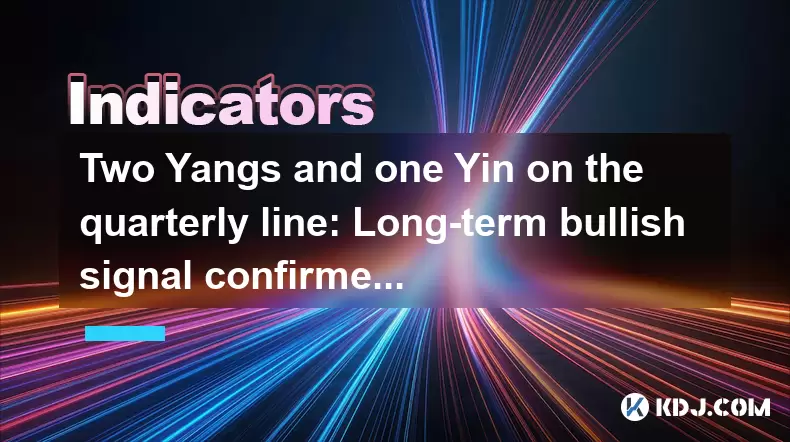
Two Yangs and one Yin on the quarterly line: Long-term bullish signal confirmed?
Jun 12,2025 at 07:00am
Understanding the 'Two Yangs and One Yin' Candlestick PatternIn technical analysis, candlestick patterns play a pivotal role in identifying potential market reversals or continuations. The 'Two Yangs and One Yin' pattern is one such formation that traders often observe on longer timeframes like the quarterly chart. This pattern consists of two bullish (...
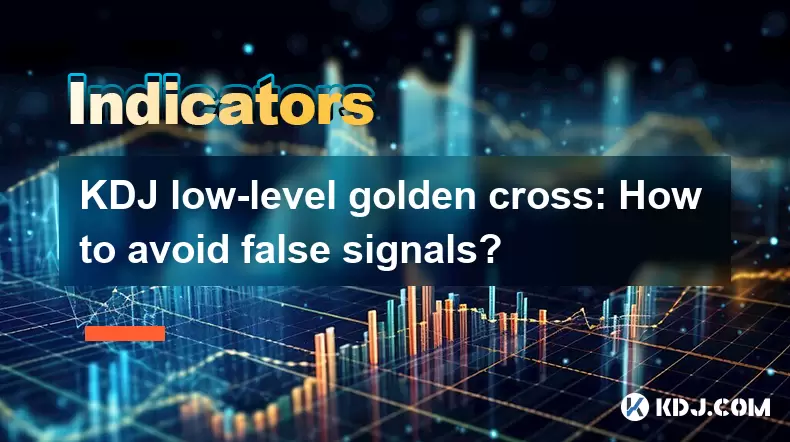
KDJ low-level golden cross: How to avoid false signals?
Jun 12,2025 at 08:21am
Understanding the KDJ IndicatorThe KDJ indicator, also known as the stochastic oscillator, is a momentum-based technical analysis tool widely used in cryptocurrency trading. It consists of three lines: the %K line (fast stochastic), the %D line (slow stochastic), and the %J line (divergence value). These lines oscillate between 0 and 100, helping trader...

Bottom-up volume stagnation: Is it accumulation or heavy selling pressure?
Jun 12,2025 at 01:42pm
What Is Bottom-Up Volume Stagnation?Bottom-up volume stagnation refers to a specific pattern observed in cryptocurrency trading charts where the price of an asset moves sideways or slightly downward, and trading volume remains consistently low over an extended period. This phenomenon is often seen after a sharp price drop or during a prolonged bear mark...
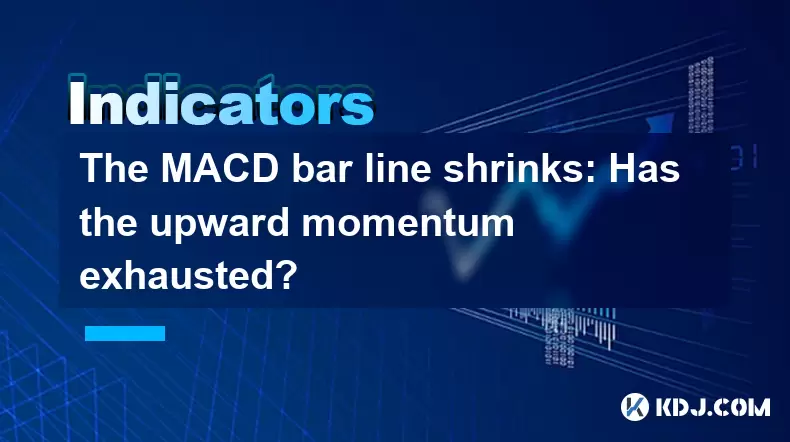
The MACD bar line shrinks: Has the upward momentum exhausted?
Jun 12,2025 at 12:49am
Understanding the MACD Bar LineThe Moving Average Convergence Divergence (MACD) is a widely used technical indicator in cryptocurrency trading. It consists of three main components: the MACD line, the signal line, and the MACD histogram (also known as the bar line). The MACD bar line represents the difference between the MACD line and the signal line. W...

The chip peak moves up: Is the main force quietly shipping?
Jun 12,2025 at 01:01am
Understanding the Chip Peak Movement in Cryptocurrency MiningIn recent years, the chip peak movement has become a critical topic within the cryptocurrency mining community. This phrase typically refers to the point at which mining hardware reaches its maximum efficiency and output capacity. When this peak shifts upward, it often signals changes in the s...
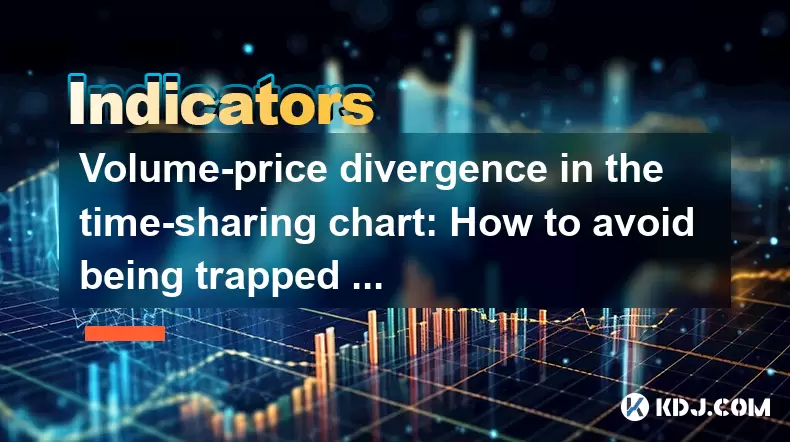
Volume-price divergence in the time-sharing chart: How to avoid being trapped on the same day?
Jun 12,2025 at 07:28pm
Understanding Volume-Price Divergence in Cryptocurrency TradingVolume-price divergence is a critical concept in technical analysis, especially within the fast-moving world of cryptocurrency trading. It refers to a situation where price movement and trading volume move in opposite directions. For instance, if the price of a cryptocurrency is rising while...

Two Yangs and one Yin on the quarterly line: Long-term bullish signal confirmed?
Jun 12,2025 at 07:00am
Understanding the 'Two Yangs and One Yin' Candlestick PatternIn technical analysis, candlestick patterns play a pivotal role in identifying potential market reversals or continuations. The 'Two Yangs and One Yin' pattern is one such formation that traders often observe on longer timeframes like the quarterly chart. This pattern consists of two bullish (...

KDJ low-level golden cross: How to avoid false signals?
Jun 12,2025 at 08:21am
Understanding the KDJ IndicatorThe KDJ indicator, also known as the stochastic oscillator, is a momentum-based technical analysis tool widely used in cryptocurrency trading. It consists of three lines: the %K line (fast stochastic), the %D line (slow stochastic), and the %J line (divergence value). These lines oscillate between 0 and 100, helping trader...

Bottom-up volume stagnation: Is it accumulation or heavy selling pressure?
Jun 12,2025 at 01:42pm
What Is Bottom-Up Volume Stagnation?Bottom-up volume stagnation refers to a specific pattern observed in cryptocurrency trading charts where the price of an asset moves sideways or slightly downward, and trading volume remains consistently low over an extended period. This phenomenon is often seen after a sharp price drop or during a prolonged bear mark...

The MACD bar line shrinks: Has the upward momentum exhausted?
Jun 12,2025 at 12:49am
Understanding the MACD Bar LineThe Moving Average Convergence Divergence (MACD) is a widely used technical indicator in cryptocurrency trading. It consists of three main components: the MACD line, the signal line, and the MACD histogram (also known as the bar line). The MACD bar line represents the difference between the MACD line and the signal line. W...

The chip peak moves up: Is the main force quietly shipping?
Jun 12,2025 at 01:01am
Understanding the Chip Peak Movement in Cryptocurrency MiningIn recent years, the chip peak movement has become a critical topic within the cryptocurrency mining community. This phrase typically refers to the point at which mining hardware reaches its maximum efficiency and output capacity. When this peak shifts upward, it often signals changes in the s...

Volume-price divergence in the time-sharing chart: How to avoid being trapped on the same day?
Jun 12,2025 at 07:28pm
Understanding Volume-Price Divergence in Cryptocurrency TradingVolume-price divergence is a critical concept in technical analysis, especially within the fast-moving world of cryptocurrency trading. It refers to a situation where price movement and trading volume move in opposite directions. For instance, if the price of a cryptocurrency is rising while...
See all articles





















